Design of the 1961 Thunderbird Sports Roadster
By Jim and Cheryl Farrell
Almost immediately after production of the ’58 Thunderbird began, Ford Motor Co. was receiving letters from fans bemoaning the demise of the two-passenger Thunderbird. Those letters continued with the ’61 Thunderbird. Designers in the Thunderbird studio were also upset because everybody had given up on the 2-passenger Thunderbird.
In June 1961, Boyer was reassigned, and Bud Kaufman became the Thunderbird studio manager. Ken Nelson was the senior designer in the studio. Kaufman and Nelson got along well and had worked together before. After listening to the complaints of other designers, Kaufman and Nelson were themselves bemoaning the demise of the two-seater Thunderbird. They both thought there was still a market for a 2-passenger Thunderbird. Nelson then told Kaufman one way to solve the problem was to cover the back seat with a fiberglass panel to create the illusion the 4-passenger Thunderbird was really a 2-passenger vehicle. Kaufman thought it was a great idea, so Nelson made a full-sized tape drawing of it.
Joe Oros was on vacation at the time, and Kaufman and Nelson knew they would have to have it done by the time he returned because it wasn’t an authorized project. So they made a fully detailed and painted small clay model of their proposal. When Oros returned, Kaufman showed the model to him and explained how it worked. Oros listened, then told Kaufman the project was done without authorization, to stop work on it, and to destroy the model.
Clever Ploy
Although Kaufman and Nelson were disappointed, Nelson suggested a ploy Ned Nichols, his old boss at GM, had used to get his pet projects noticed. They decided to make a really great illustration of their proposal and present it to George Walker, head of the Styling Center, to hang on his office wall.
Nelson worked on an illustration with Marty Kallman, a studio designer then considered the best at drawing people and background. Nelson drew the car in the illustration, Kallman did the rest. The illustration showed a 3/4 view of a red ’61 Thunderbird with people all around it parked at the Greenbriar resort. Kallman included Kaufman in the illustration explaining the concept to Walker, with a “pensive” Joe Oros in the background next to Lewis Crusoe, former head of Ford Division. When finished, they presented the illustration to Walker. He was delighted and hung it on the wall of his office. The next thing Kaufman and Nelson knew, Walker came to the Ford studio to talk to Oros. After that, the hard tonneau soon became an authorized project.
There is a dispute about who came up with the idea of the Thunderbird’s hard tonneau cover. Lee Iacocca replaced Wright as head of Ford Division in 1961. Iacocca claimed he and his then product planner, Will Scott, were in the Ford and Thunderbird studios often. John Najjar, who at that time was the exec in the Corporate Projects studio, says he passed a request on from Iacocca to Kaufman to come up with a hard tonneau for the ’61 Thunderbird. But, no matter whose idea it initially was, everyone agrees, Kaufman was the designer of the hard tonneau. Some 1,900 Sports Roadster, as they were called, with Kaufman’s hard tonneau and Kelsey-Hayes wire wheels, were sold in 1962-63.
At the time the ’61 Thunderbird was being designed, designers were working not only on the ’61 Thunderbird, but on future Thunderbird themes as well. Powers has long maintained that his sketches, done at the time the ’61 Thunderbird was being designed, also influenced the ’64 and the ’67 Thunderbirds. Ideas are contagious, and other designers rightfully claim to have designed those cars, but it’s hard to argue with the sketches Powers did at the time the ’61 design was underway. They bare a remarkable similarity to the themes adopted to the ’64 and the ’67 Thunderbirds. Soon after his ’61 Thunderbird proposal, Powers was to promoted to manager and then exec, but left Ford in 1966 to pursue a successful career in California as an independent designer.
The T-Bird Italien
During the new Thunderbird’s three year production run, at least one show car based on the 1961-63 Thunderbird was built. That car was called the Italien. It was a modified ’63 Thunderbird convertible made into a fastback, and it was shown as part of the Ford Custom Caravan. The car was also a big hit at many custom car shows across the country.
The Italien was designed by John Orfe in March 1962, at the request of Ford’s management, primarily because a Mustang fastback was being considered at the time. (The Italien’s fastback roof was one of the influences for the shape of the ’65 Mustang fastback.) The request made to Orfe came from Engel’s replacement Bob Maguire who took over as studio head when Engel left to become the head of Chrysler design, and from John Najjar, who continued as number two designer in that studio. The request for a show Thunderbird apparently originated with Iacocca.
Orfe spent a week preparing the “layout, trace off and renderings” for the car, before he started a full-sized airbrush rendering. When Orfe designed the Italien, he was assigned to the International and Canadian Studio, so he was “borrowed” by Maquire and Najjar who watched as Orfe prepared his full-sized airbrush rendering. Orfe’s rendering helped sell the idea. The Italien was built by Dearborn Steel and Tube based on Orfe’s rendering, with Vince Gardner, an employee of Dearborn Steel and Tube, doing necessary design work during the construction process.
After its show days were over, the Italien was sold to Dale Robertson’s son of Cliff. In the late 1980s, it was acquired by Don Chambers, a car collector in Los Angeles. In 2007, the Italien was restored by Tom Maruska of Duluth Minnesota, and in 2008, it was sold at auction for $660,000 to the Blackhawk Auto Museum in Danville California.
Photos: Ford Design and other sources.
Books by Jim and Cheryl Farrell
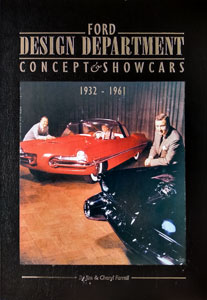
Ford Design Department—
Concepts & Showcars
1999, 10×13, 400 pages, Fully indexed
900 photos. Includes 150+ designers and sculptors, and highlights 100 concept cars.
ISBN 0-9672428-0-0
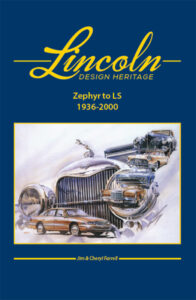
Lincoln Design Heritage:
Zephyr to LS (1936-2000)
2021, 10×13, 480 Pages, Fully Indexed
1,600 photos and illustrations
ISBN 978-0-9672428-1-1
The Ford book is $50 plus $7 S&H (US). The Lincoln book is $85 plus $10 S&H (US). Both books bought together are $110 plus $17 S&H (US). To order, email: cfarrell57@gmail.com

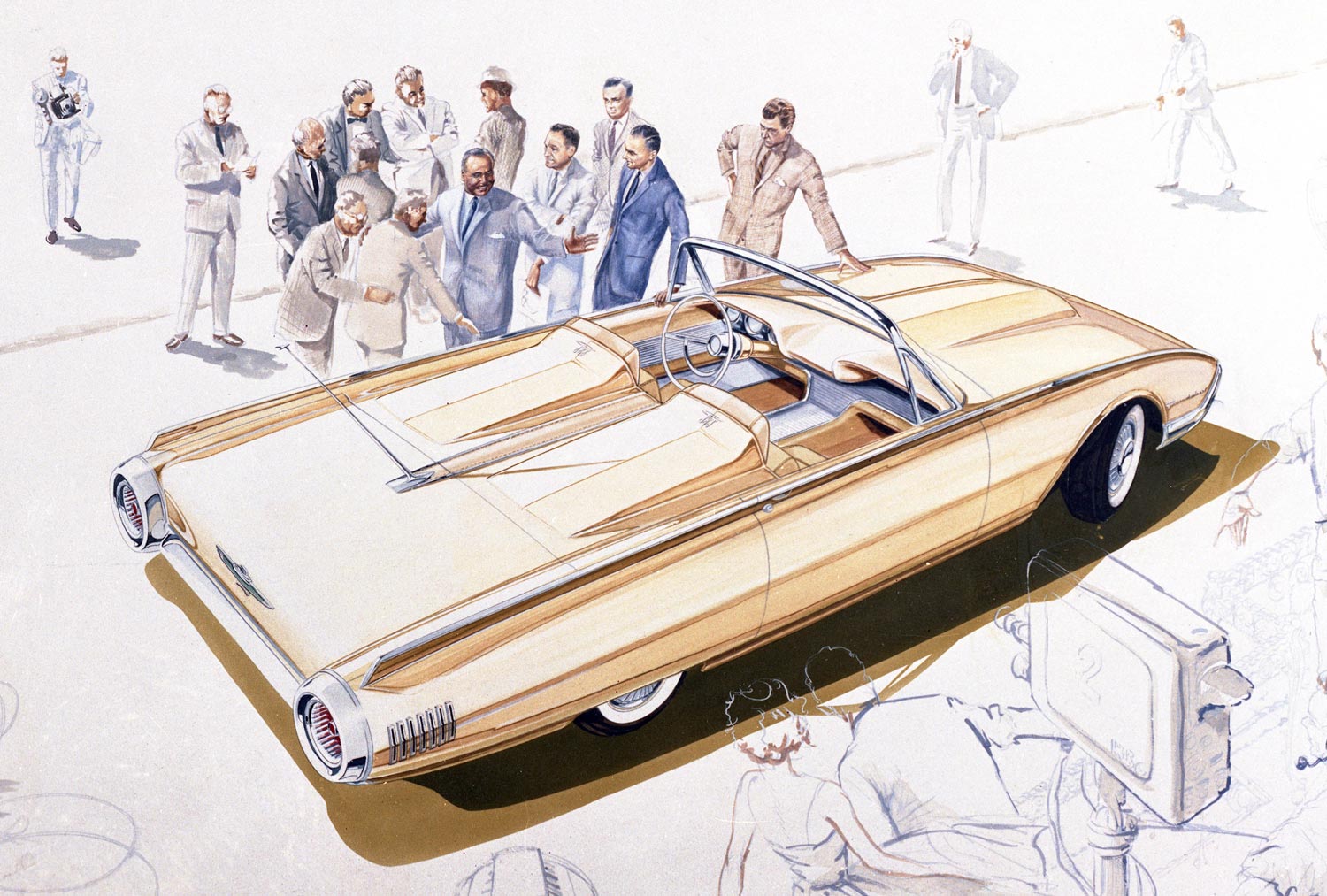
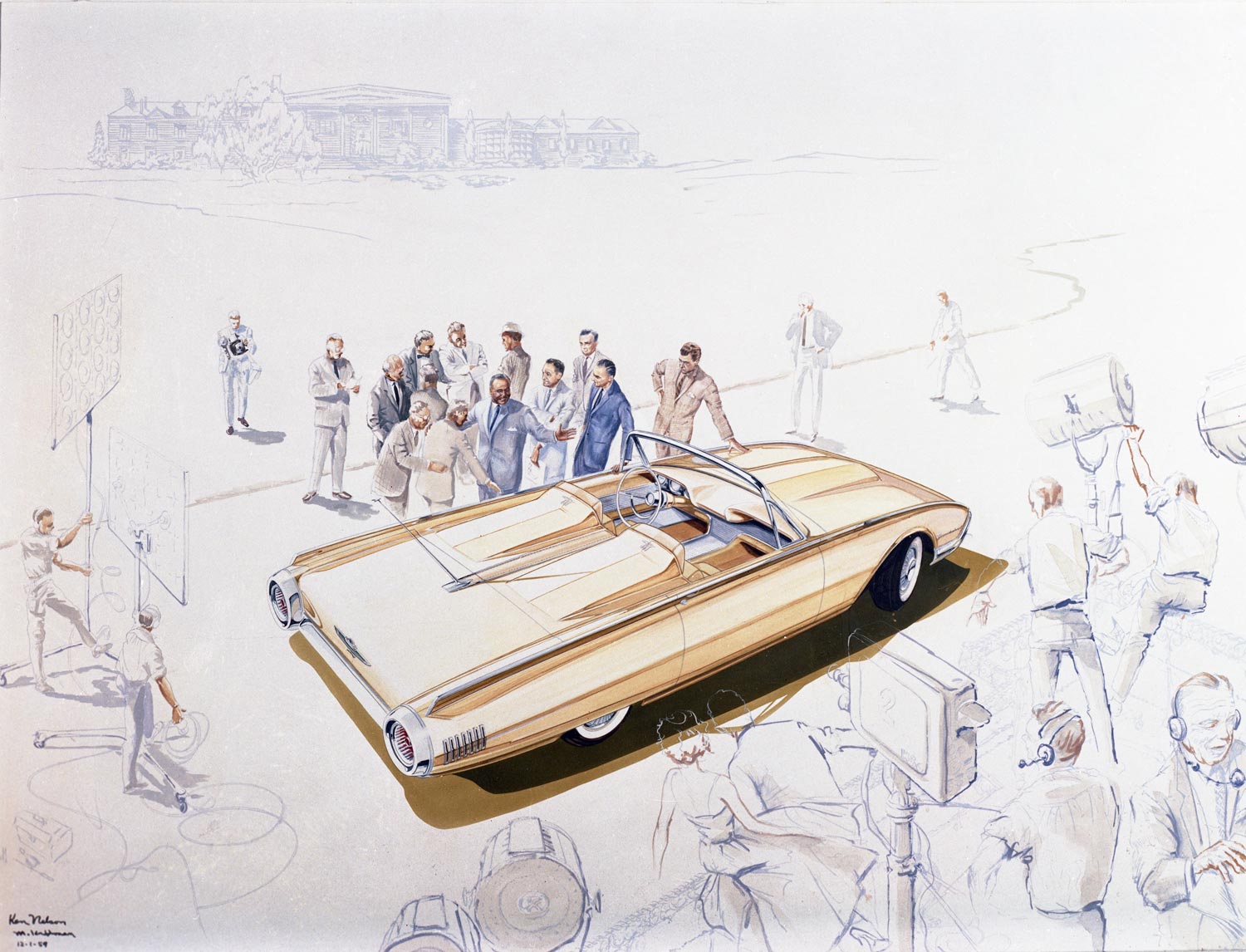
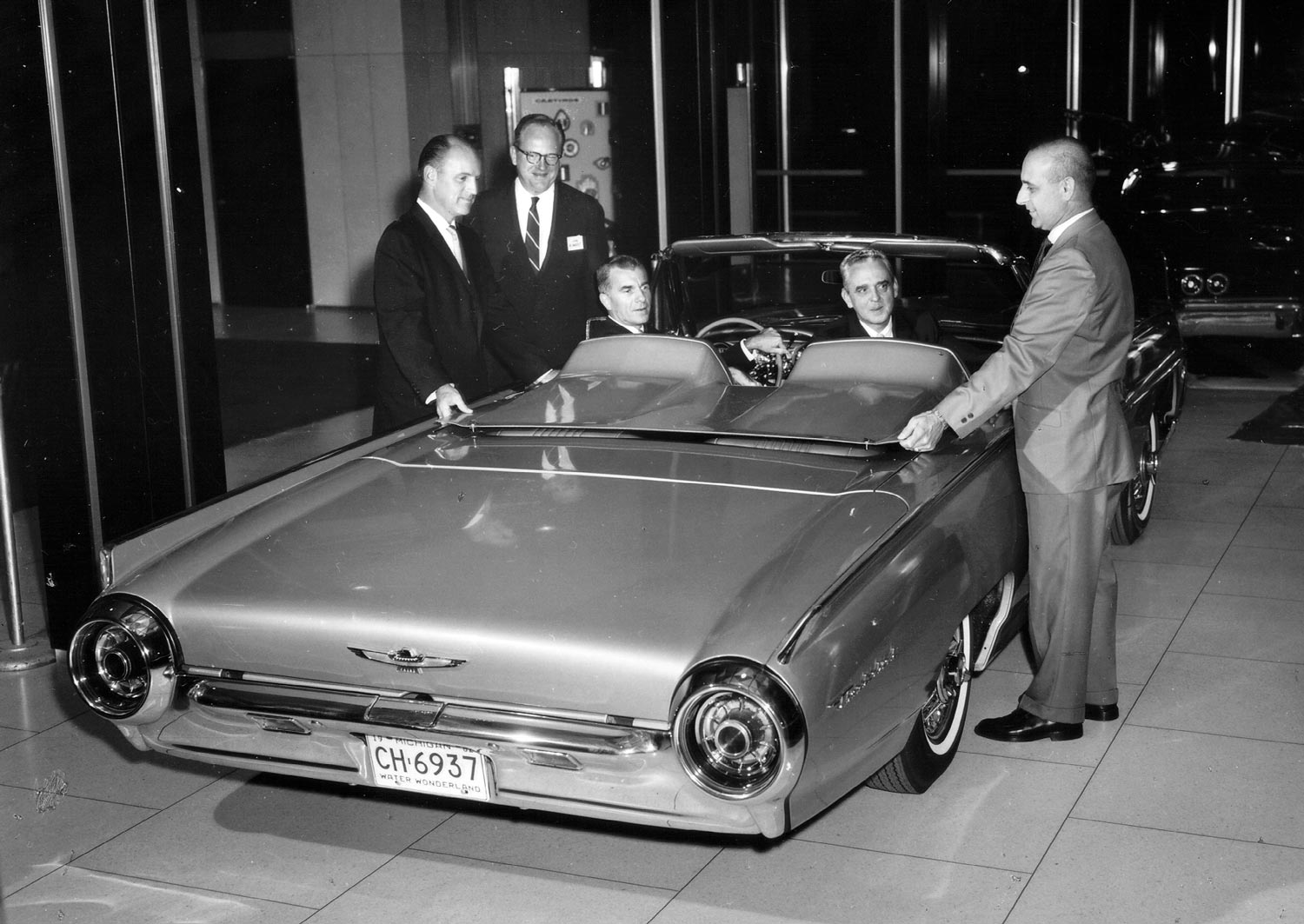
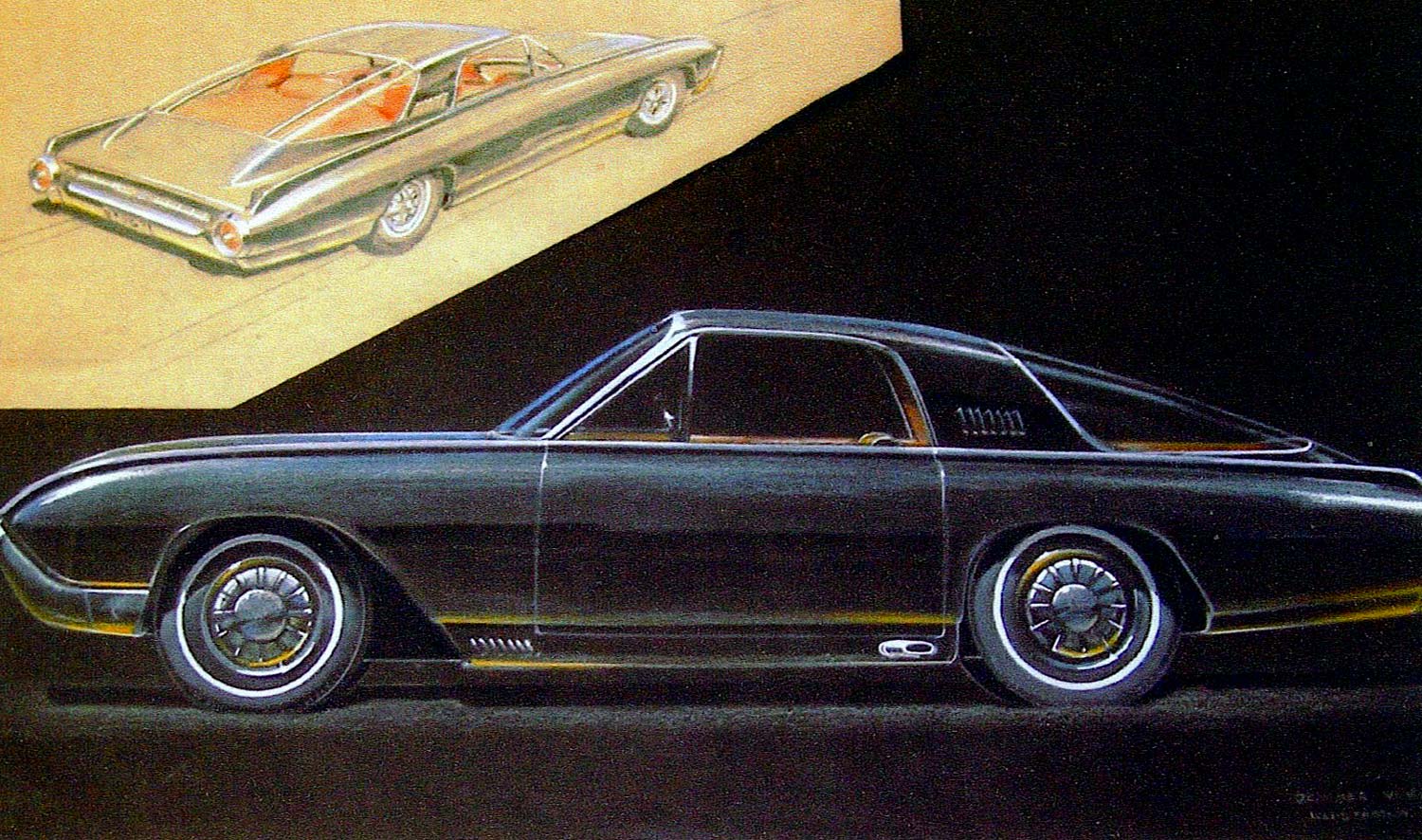
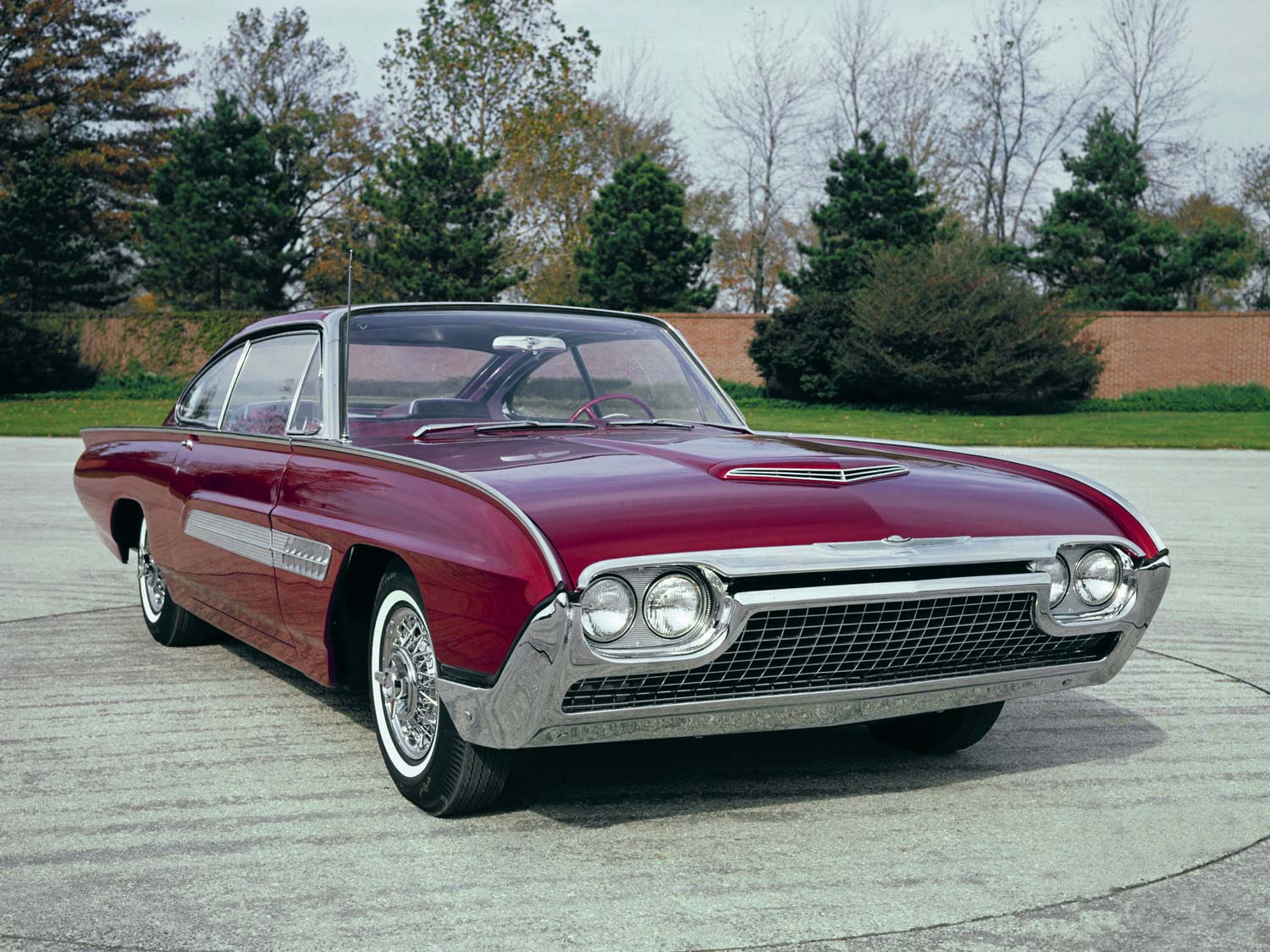
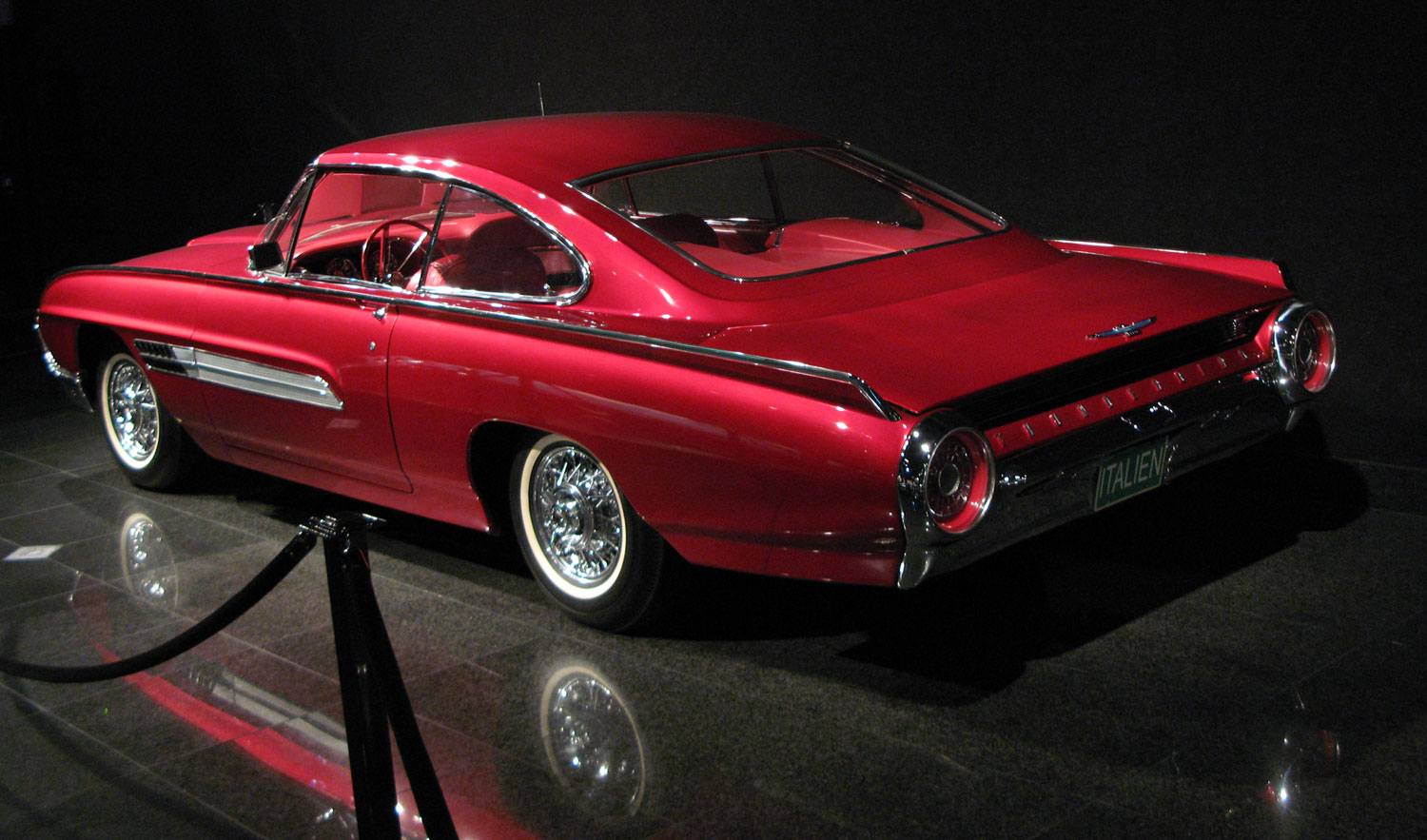
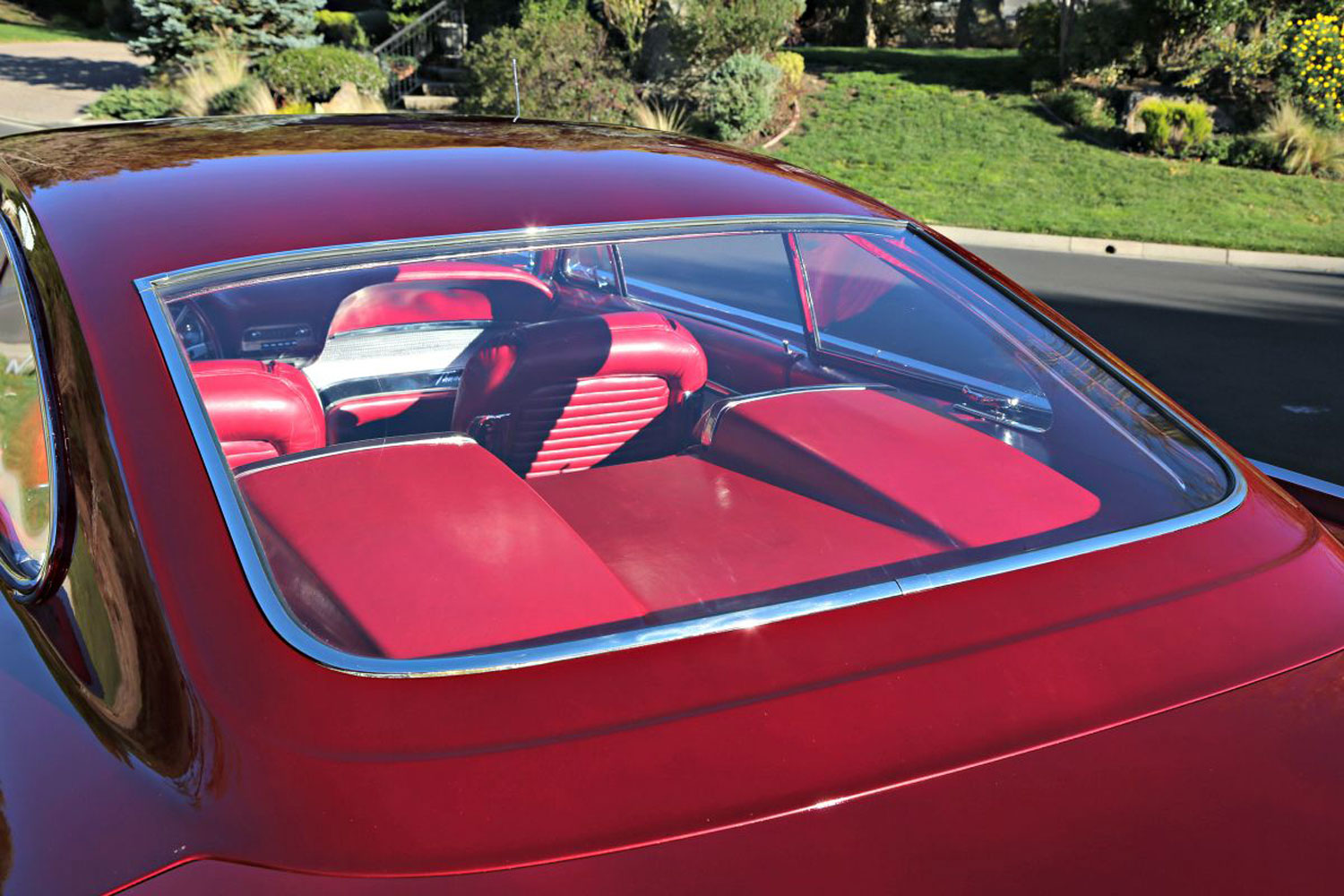
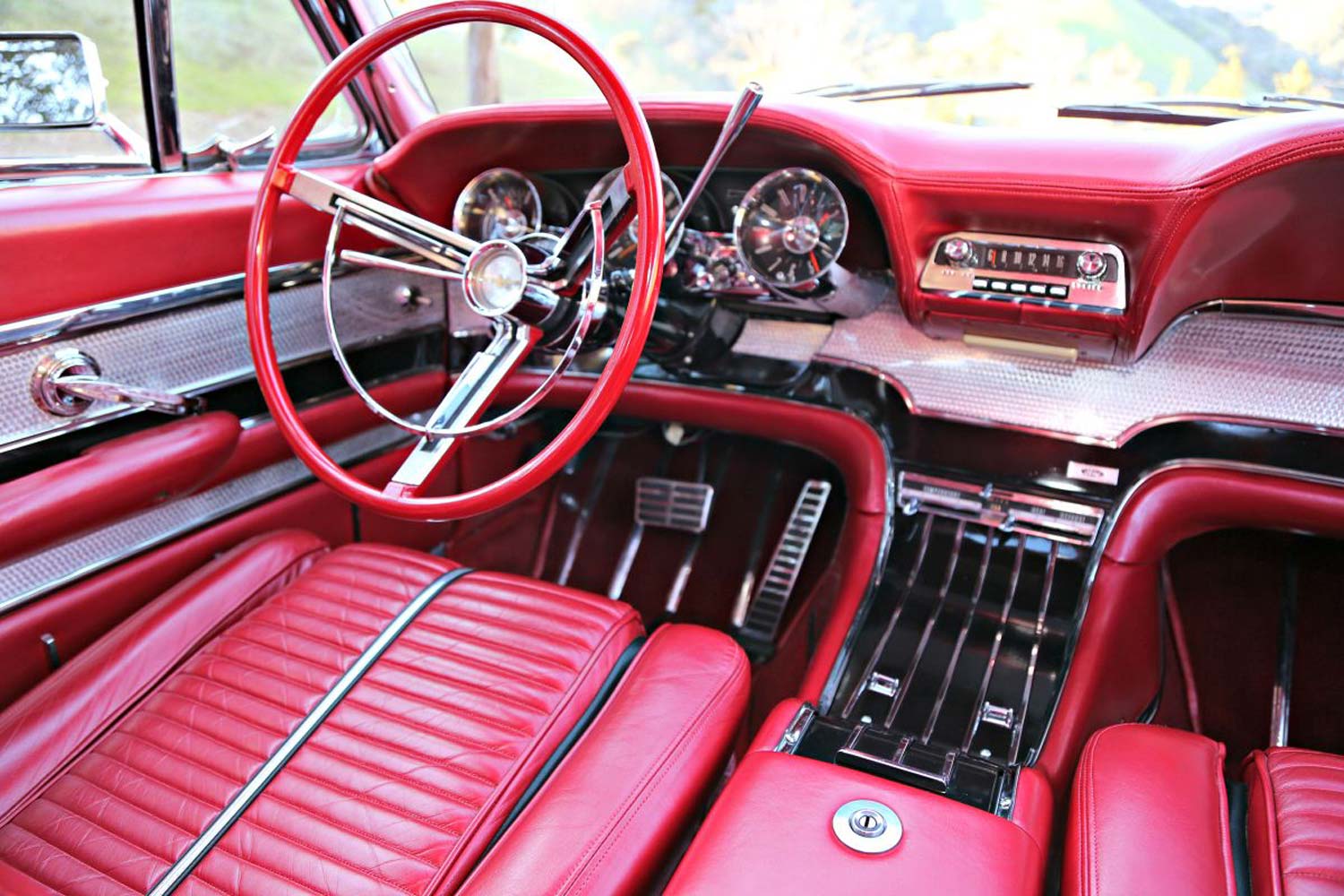
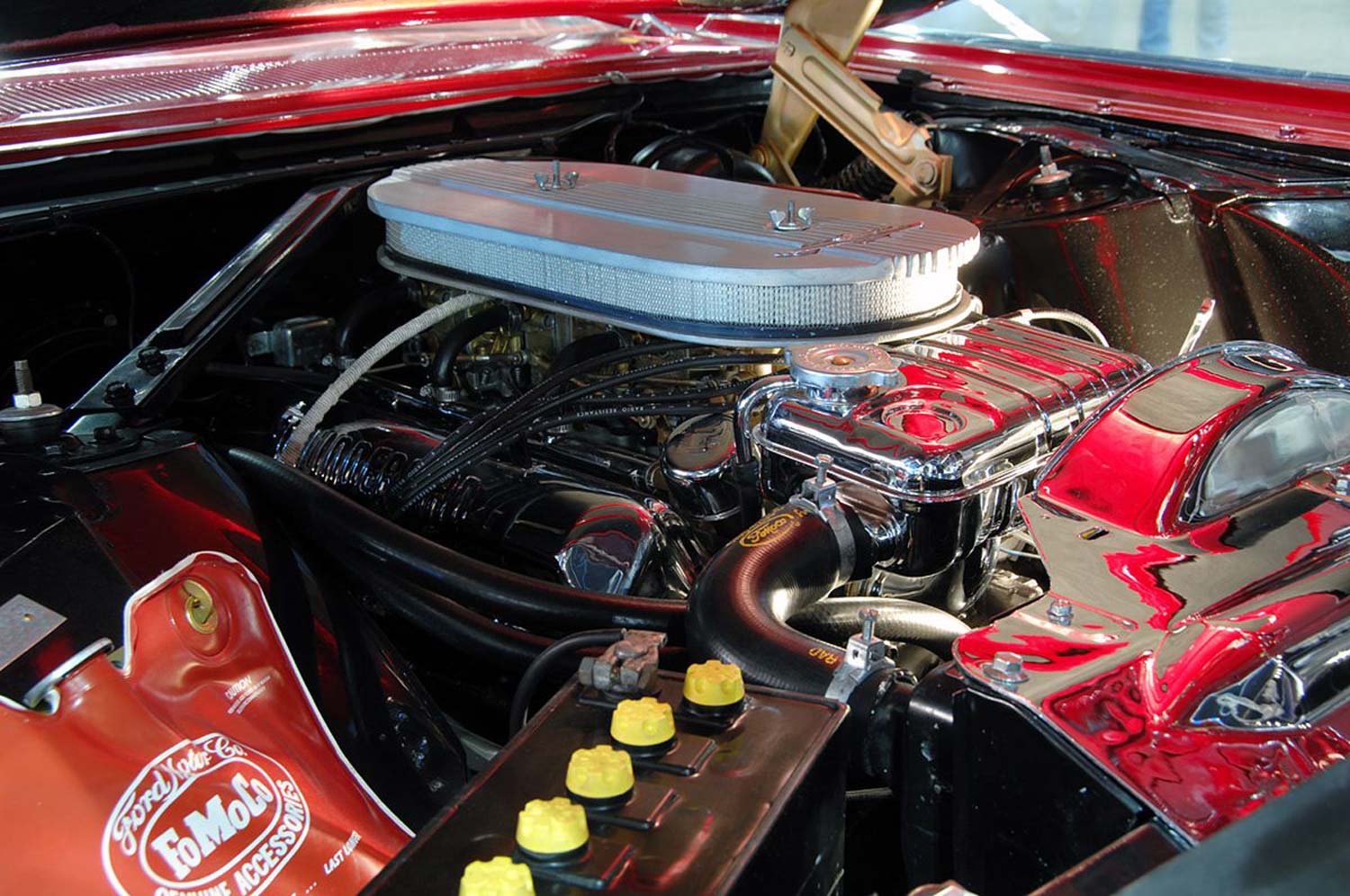
Looks a lot like a Starliner roofline, too.
The 1961-1963 Thunderbird Sports Roadsters have always been my favorite T-Bird ! The Italien would have made a great 1964-1965 model, but it would have been lost on the 1964 restyled T-Bird ! Thank you for the story and the sketches.
Wow, that coupe is gorgeous!
“Oros listened, then told Kaufman the project was done without authorization, to stop work on it, and to destroy the model.” I love it when this NIMBY reaction is illustrated with a successful and well-remembered concept. Because we all know how many times exactly that method used WAS successful in itself. Beyond that, Ford has the distinct honor of ending the ‘space age” of styling; on one hand with the “61 Thunderbird and its “Rocketbird” looks, and the ’58-’60 Continental, the “Space Shuttle” of car styling. The ’61 Thunderbird was the last really substantially styled car under that name, sadly. What a wonderful car. And where is the Italien today?
The “Italien” roofline is somewhat in evidence on the British Consul Capri coupe–a little quirky there, on a smaller car with a lot of American themes, not all of them particularly Ford-ish to my eyes; but beautiful on the show car. I’d never seen the Italien before, many thanks!
While summer vacationing on coastal Oregon about 10 years ago, I attended a classic car event on the streets of Seaside, Oregon. One of the cars was a ’61 – ’63 Thunderbird in turquois blue that incorporated a 1960 Starliner roof. The build quality inside and out was excellent and the gently curving lines of the Starliner roof melded beautifully with the “round Bird” styling, making the hard squared-off lines of the factory hard top appear out of place with the rest of the car by comparison. (Once the ’64 square bird arrived the carried-over factory hard top of the ’61 – ’63 looked right once more, like it did on the ’58 – ’60 square Bird.) That customized Thunderbird looked like it could have come right from the Ford design studios.
Kevin Bishop, I think that’s the Thunderbird I saw at the Petersen Museum a few years ago….there are a few “StarBird” conversions out there. The sad thing for me is that I didn’t know about the Italien then, since it is obviously the inspiration for all of the conversions. Really too bad that Ford didn’t take this obvious step, since the 2-door hardtop was really vanilla compared to the convertible/Sports Roadster.
After the Robertson ownership, the Italien ended up on a Hollywood Ford dealer’s used car lot as a garden variety used Thunderbird. It later ended up in Oxnard, California, driven by an Hispanic lady who was not aware of its provenance. An astute hobbyist recognized it, bought it, and the rest is history. To my best knowledge, it’s still in the Danville museum in northern California.
I’ve seen pictures of the 1961 “StarBird” and believe it would have been a natural follow-up to the 1961 Starliner. As it turned out, a more formal roof style with blind quarters was fast catching on with every car maker in Detroit.
The ’61 Starliner was followed up with a 1962 Sunliner with a removable ’61 Starliner fiberglass roof (a la ’55 Thunderbird) and was named “Starlift convertible”. I don’t believe any production figures were maintained.
Who else of importance was infused with the beautiful Italien? How about Rambler? They introduced what started as a Mustang/Falcon hi-po car, but it landed on an ’63 Classic wheelbase, causing its instant demise. The body was box, the roof was Italien. By the third year of production, they changed the body from the ’65 Classic to the ’67 Ambassador, and a truly gorgeous car resulted, albeit on the too-large wheelbase.
Rick Holloway, a renowned Southern California ’61-’63 Thunderbird hobbyist, built an Italien clone, using the roof from a salvaged ’67 Rambler Ambassador.
And just to cover all Italien bases, AMT made an annual 1/25th model kit of the ’63 Thunderbird convertible and included the Italien roof as a custom option.
I appreciate the comments about Jim Powers contributing to the TBird concepts here. In a conversation we had at Art Center he shared the exploration for the ’61 Bird wherein what became the Continental was a direct T Bird proposal. I’d love to see those images of a small 2door Cabriolet Continental. That must have been pretty striking? But Clearly they chose the correct path. love these stories of “What may have been, Could have been”. The creation process is full of twists and turns!!
Question: Did the ‘Italien’ start with a 1962 production convertible or a 1963 convertible? I think I have every book published about T-Birds and some say the Italien started as a 1962 convertible. Please clarify if you can.
Growing up my parents bought new T-Birds (1960 conv., 1963 hardtop, 1966 Town Landau). I now have a 1966 convertible, restored. At age six, earliest memory of T-Birds was a neighbor lady who frequently drove me to school in her new pink 1957 T-Bird.